Physical Address
304 North Cardinal St.
Dorchester Center, MA 02124
Fecal incontinence can have serious implications on the social development of children and young adults, which, in turn, can provoke serious psychological and behavioral sequelae. It is a problem that affects more children than previously appreciated, including those born with anorectal malformations (ARMs), Hirschsprung disease (HD), spinal cord problems or spinal injuries, and severe functional (idiopathic) constipation.
True fecal incontinence must be distinguished from pseudoincontinence. Children with true fecal incontinence include some surgical patients with ARM, those with HD, and those with spinal problems, either congenital or acquired, because they lack a key anatomic element required for voluntary bowel movements. Patients with pseudoincontinence have all the physiologic capabilities necessary for bowel control, but still soil. Their problem usually results from severe constipation (encopresis) and sometimes from hypermotility. In addition, despite being anatomically normal, they may have significant psychological, behavioral, and/or intellectual deficiencies that severely curtail their ability to develop and maintain bowel control.
The majority of patients with an ARM have a degree of dysfunction in their fecal continence mechanisms. Although the majority of ARM patients are able to have voluntary bowel movements, many report incontinence at some point and up to half require regular treatment for constipation. The incidence of fecal incontinence after pull-through surgery for HD depends on the presence or absence of associated syndromes. Only a small minority of nonsyndromic patients report incontinence, which may be related to damage to the sphincters and/or anal canal that occurred during their operation. However, about half of syndromic patients report incontinence, illustrating the importance of central processing on the development of voluntary bowel movements. To varying degrees, patients with spinal problems or injuries can lack the capacity for voluntary bowel movements. Patients with severe functional constipation (FC) can soil due to overflow of stool, which usually results from inadequate emptying of the colon. Diarrhea also can lead to soiling in cases of hypermotility.
Patients with true fecal incontinence require an artificial way to be kept clean. This regimen is termed bowel management and involves a daily enema that can be given retrograde via the rectum, or antegrade via a Malone procedure or cecostomy. , Patients with pseudoincontinence, on the other hand, require an effective medical regimen for treatment of either constipation or loose stools. This involves getting the stool to the right consistency so they can have a bowel movement that they voluntarily control. Understanding this significant distinction is the key to deciding the correct bowel treatment.
Fecal continence depends on (1) voluntary sphincter muscles, (2) anal canal sensation, (3) colonic motility, and (4) the intellectual and psychological capacity to achieve continence.
In the normal patient, the voluntary muscle structures are represented by the levators, the muscle complex, and the parasagittal fibers. Normally, they are used only for brief periods when the fecal mass, pushed by the involuntary peristaltic contraction of the rectosigmoid colon, reaches the anorectal area. This voluntary contraction, that keeps the stool in the rectum by closing the anus, occurs only around the time of defecation. These muscles are used only occasionally during the remainder of the day and night. Other than time around defecation, the rectum is empty, and the anal tone is supplied by the involuntary internal sphincters.
Patients with ARM have abnormal voluntary striated muscles with different degrees of hypodevelopment. Some patients are close to normal, whereas other patients do not have any voluntary sphincter muscles at all. Patients with HD are all born with an intact continence mechanism, but some may have suffered damage to the sphincter mechanism at the time of the pull-through. Patients with spinal abnormalities may have deficient innervation of these muscles. Patients with FC have normal sphincters.
Voluntary muscles are used only when the patient has the sensation that determines that it is necessary to use them. To appreciate that sensation, the patient needs information that is derived from an intact anal sensory mechanism.
Exquisite sensation in normal individuals resides in the anal canal. Except for patients with rectal atresia and anal stenosis, most patients with an ARM are born without an anal canal. Therefore, sensation does not exist or is rudimentary. Patients with spinal problems may lack this anal canal sensation as well. Those with HD are born with a normal anal canal, but this can be injured if not meticulously preserved at the time of their colonic pull-through ( Fig. 36.1 ). Patients with perineal trauma may have an injured or destroyed anal canal.
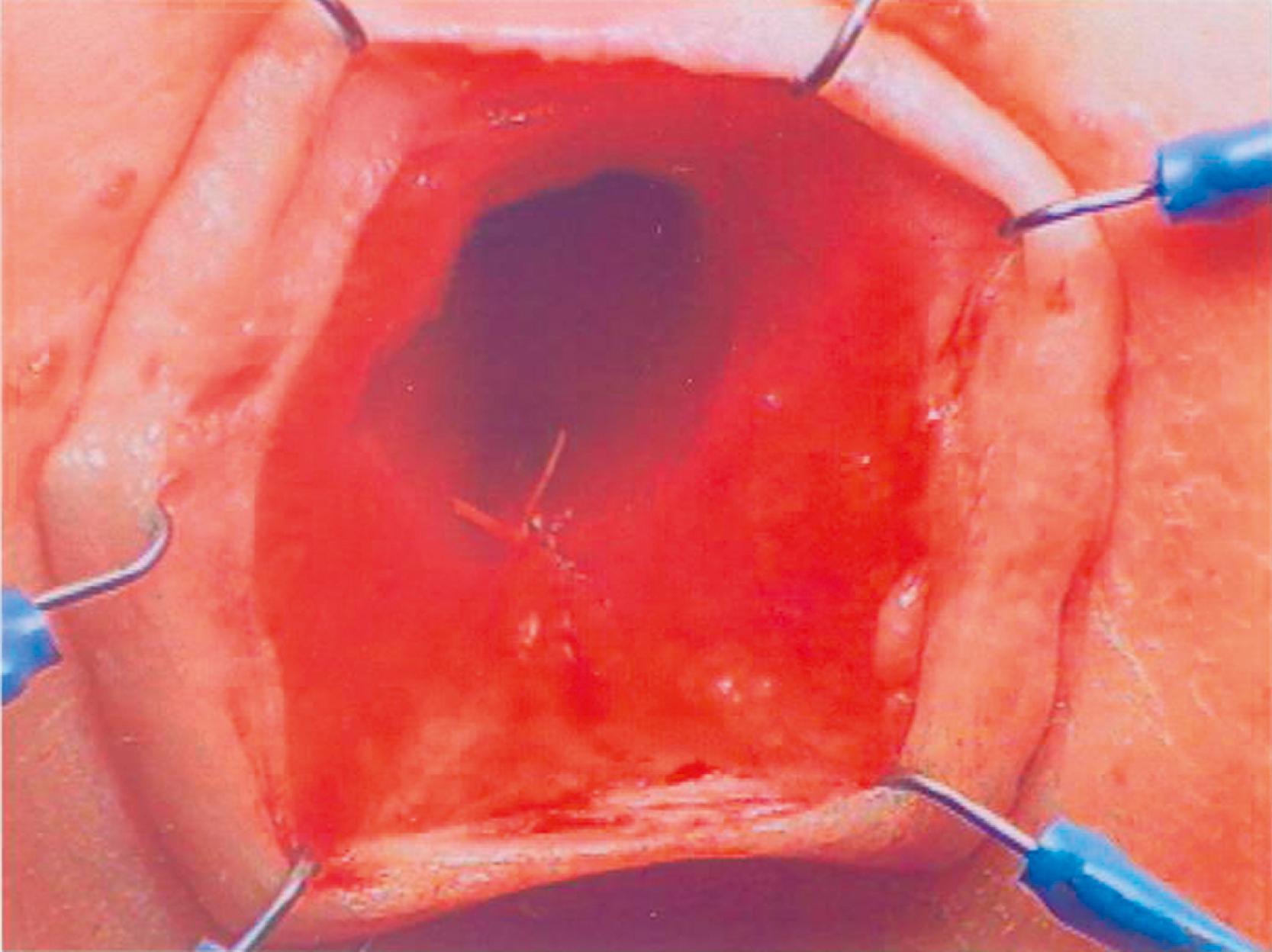
It seems that most individuals can perceive distention of the rectum. This point is important for patients undergoing pull-through procedures for anorectal atresia as the distal rectum must be placed precisely within the sphincter mechanism. This sensation of rectal stretch seems to be a consequence of distention of the voluntary muscles, and is called proprioception. The most important clinical implication is that patients might not feel liquid or soft fecal material because such stool consistency does not distend the rectum. Thus, to achieve some degree of sensation and bowel control, the patient must have the capacity to form solid stool. It is particularly important to give sensory cues in a patient without a good anal canal. Proprioception is very important in patients with ARM, particularly when one considers the effect of laxatives and stool softeners. Medicines that lead to soft or liquid stool should be avoided. Instead, medicines that stimulate emptying and those that bulk the stool should be favored. Children with ulcerative colitis who have undergone an ileoanal pull-through operation are a good example of this issue. At times, they can suffer from varying degrees of incontinence due to the incapacity to form solid stool, but their normal sphincter muscles and anal canal allow them to overcome this problem most of the time. Some will need the help of treatments that bulk the stool.
In a normal individual, the rectosigmoid colon remains quiet for varying lengths of time (one to several days), depending on defecation habits or dietary consumption. During that time, sensation and voluntary muscle structures are really not necessary because the stool, if it is solid, remains inside the colon. The origin of the anal canal resting tone is somewhat controversial but likely has contributions from the involuntary internal anal sphincters (IAS). The patient can feel the peristaltic contraction of the rectosigmoid that occurs before defecation. Stool entering the rectum initiates the rectoanal inhibition reflex (RAIR), which leads to relaxation of the involuntary sphincter. The voluntary muscles are used to push the rectal contents back up into the rectosigmoid to hold the stool until the appropriate time for evacuation. At the time of defecation, the voluntary muscle structures relax, and the stool exits the anus helped by gravity and the abdominal wall muscles.
Most patients with an ARM suffer from some disturbance of this sophisticated defecation reflex mechanism. Patients who have undergone a posterior sagittal anorectoplasty (or any other type of perineal approach in which the most distal part of the bowel was preserved) can show evidence of an overefficient bowel reservoir (megarectosigmoid) ( Fig. 36.2 ), the main clinical manifestation of which is constipation, which seems to be more severe in patients with less complex defects. Constipation that is not aggressively treated, combined with a dilated colon, eventually leads to more severe constipation. A vicious cycle ensues, with worsening constipation leading to more rectosigmoid dilation, leading to more severe constipation, and then to overflow incontinence.
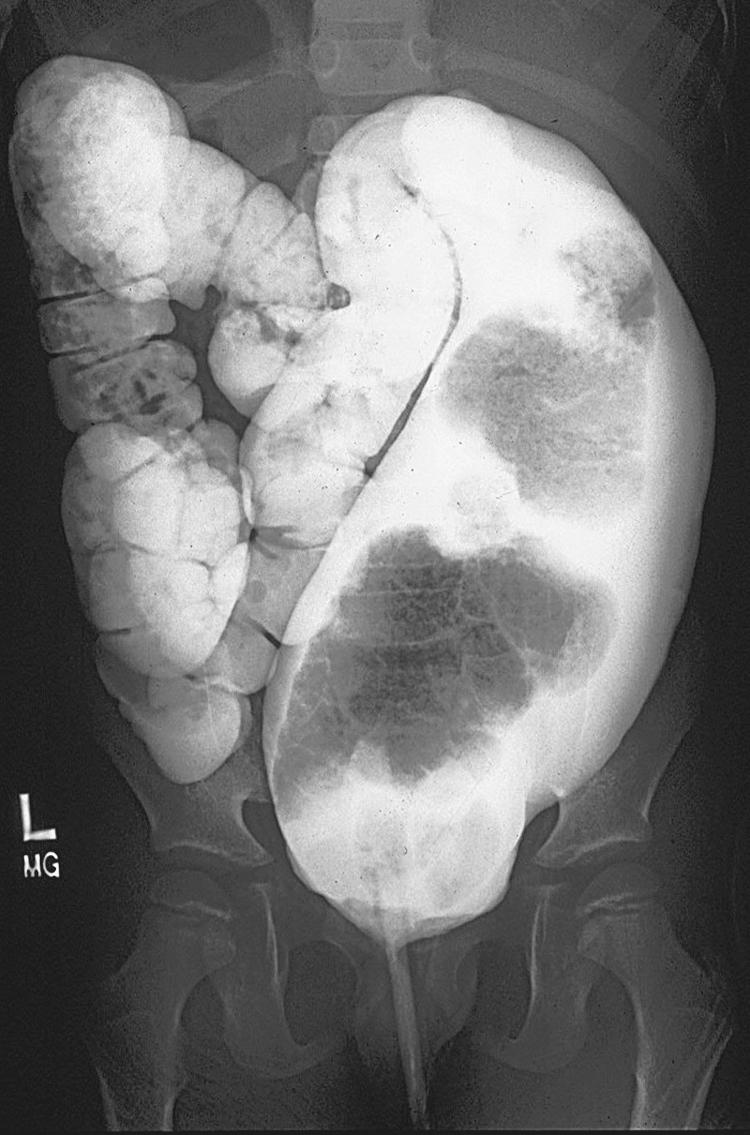
Patients with an ARM, who are managed with operations in which the most distal part of the bowel was resected ( Fig. 36.3 ) (such as an abdominoperineal pull-through), behave clinically as if they have no rectal reservoir. Depending on the amount of colon removed, the patient may have loose stools. In these cases, medical management requires enemas, a constipating diet, and medications to slow the colonic motility. Patients with HD usually undergo operative resection of the distal aganglionic colon and rectum. However, their intact normal anal canal and sphincter mechanism (if properly preserved), combined with postoperative absent RAIR, allows the vast majority of them to be continent despite the lack of a rectal reservoir. Some patients with HD have bowel hypermotility and need medications to slow the colon. Amazingly, some patients with an injured anal canal and sphincters related to a perineal trauma can be continent if their motility is normal, because they are able to produce solid stool, which allows them to use acquired sensation much like ARM patients. In time, this can translate into successful voluntary bowel movements. Patients with FC have an inherently slow motility that is not well understood. Most of these patients improve with stimulant laxatives that increase colonic motility.
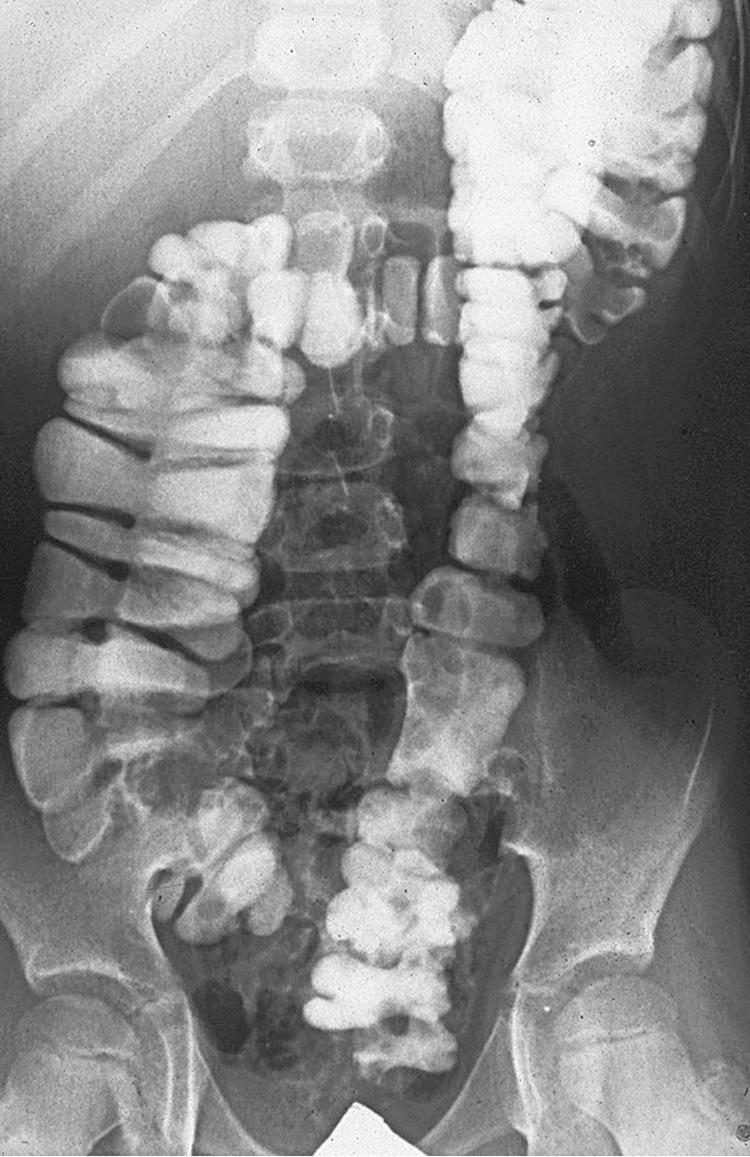
There are patients who possess all the anatomic structures required to develop bowel control, but they lack the ability to integrate the various functions and therefore present with incontinence. Patients with significant neurodevelopmental delay or behavioral problems, including the autism spectrum, fall into this category. Many of these patients and families benefit from being enrolled in a structured bowel management enema program. However, some children with severe behavioral issues may not be able to tolerate rectal enemas, and many benefit from an antegrade enema instead.
True fecal incontinence means the patient does not have the ability (from an anatomic point of view) to have voluntary bowel movements and therefore requires an artificial mechanism to empty the colon. The ideal approach to this situation is a bowel management program consisting of teaching the patient and the parents how to clear the colon once daily with an enema so the patient stays completely clean for 24 hours until the next enema. This is achieved by keeping the colon quiet between enemas. Laxatives or stool softeners will make such a patient soil more. The program, although simplistic, is ideally implemented by trial and error over a period of 1 week. The patient is seen each day, and an abdominal radiograph is taken so the patient can be monitored for the amount and location of any stool left in the colon. The presence or absence of stool, and of soiling accidents, is recorded. The decision as to whether the type and/or quality of the enemas should be modified, as well as any changes in diet and/or medication, can thus be made daily based on this information ( Fig. 36.4 ).
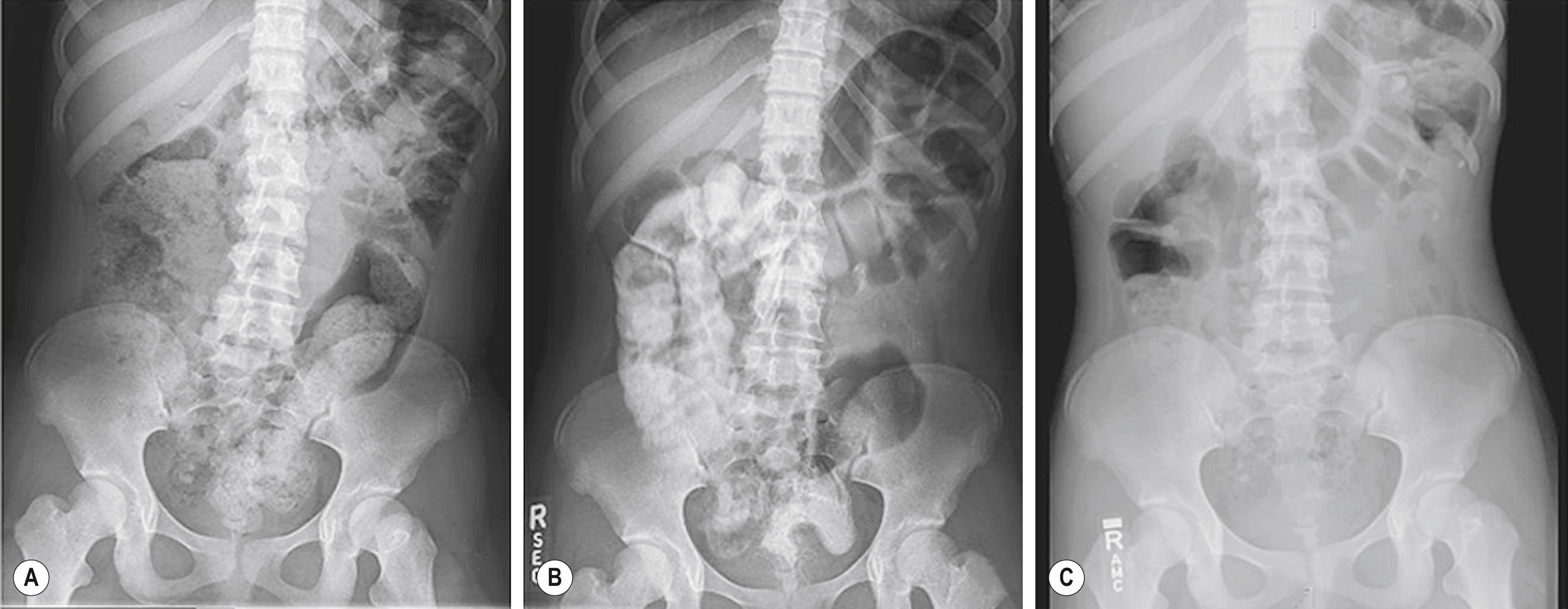
In children with ARM, more than half are able to pass voluntary bowel movements and toilet train. Up to two-thirds of patients report soiling in their underwear. These episodes of soiling are usually related to constipation. When the constipation is treated effectively, soiling will improve. Thus, approximately one-third of patients have voluntary bowel movements and no soiling, and behave like normal children. However, children with good bowel control may still suffer from temporary episodes of fecal incontinence if they experience diarrhea.
Close to half of all patients with ARM suffer from true fecal incontinence and are the patients who need a bowel management program to be kept reliably clean. As noted, certain patients with HD (those with injured anal canal and sphincters) and those with spinal problems can suffer from true fecal incontinence as well. For these patients, similar principles of bowel management learned from the treatment of patients with ARM can be applied.
For children with ARMs, the surgeon should be able to predict in advance who may have a good functional prognosis and who has a poor prognosis ( Table 36.1 ). A combination of the type of malformation, the degree of sacral development, and the presence or absence of spinal abnormalities form the ARM index. A combination of a good-prognosis ARM, a sacral ratio of more than 0.7, and a normal spine predicts the likelihood of successful voluntary bowel movements. A poor-prognosis ARM patient has a sacral ratio of less than 0.4 and spinal abnormalities. Such a patient will likely require bowel management with enemas. The patients in between are less easy to predict, and a discussion about realistic expectation and expectant management is important. Further study to be able to better predict this middle group is currently ongoing.
| Good Prognosis Signs | Poor Prognosis Signs |
|---|---|
| Good bowel movement patterns: One to two bowel movements per day, no soiling in between | Constant soiling and passing of stool |
| Evidence of sensation with passing stool (pushing, making faces) | No sensation (no pushing) |
| Urinary control | Urinary incontinence, dribbling of urine |
Table 36.2 shows the most common indicators of a good and poor prognosis in ARM patients. Parents should be given the information regarding their child’s realistic chances for bowel control to avoid needless frustration at the age of toilet training. Also, bowel management with enemas should be started for borderline cases to get children into normal underwear at the appropriate age, which facilitates their future ultimate success of voluntary bowel movements without the need for enemas.
| Good Prognostic Signs | Poor Prognostic Signs |
|---|---|
| Normal sacrum Prominent midline groove (good muscles) Some types of anorectal malformations: Rectal atresia Vestibular fistula Anorectal atresia without a fistula Cloacas with a common channel <3 cm Less complex malformation:Perineal fistula |
Abnormal sacrum Flat perineum (poor muscles) Some types of anorectal malformations: Rectal/bladder neck fistula Cloacas with a common channel >3 cm Complex malformations |
Once the diagnosis of the specific anorectal defect is established, together with a review of the sacral development and spinal status, the functional prognosis can be predicted. If the child’s defect is associated with a good prognosis (e.g., a vestibular fistula, perineal fistula, rectal atresia, rectourethral bulbar fistula, or colorectal atresia without fistula), one should expect that the child will have voluntary bowel movements by the age of 3–4 years (provided the sacrum and spine are normal). These children will need careful supervision to avoid fecal impaction, constipation, and soiling.
If the child’s defect is associated with a poor prognosis, such as a high cloaca with a common channel longer than 3 cm or a rectobladderneck fistula, or a myelomeningocele or tethered cord, together with a hypodeveloped sacrum, the child will most likely need a bowel management program with enemas to remain clean. This should be implemented at 3–4 years of age and before starting school. Children in the middle of the spectrum have a chance of having voluntary bowel movements, but this is more difficult to predict. Patients with true fecal incontinence and a tendency toward constipation should not be treated with laxatives, but instead need an enema program.
In patients who have undergone repair of colorectal atresia and who have fecal incontinence, a reoperation to relocate a misplaced rectum or repair a rectal prolapse with the hope of obtaining good bowel control should be considered if the child was born with a good sacrum, a good sphincter mechanism, and a malformation with good functional prognosis. It is important to confirm that a patient has had the best possible anatomic reconstruction before concluding whether they can have voluntary bowel movements.
Children with ARM who have reached the age for a bowel management program can be divided into two well-defined groups, each requiring individualized treatment plans. The first and larger group has fecal incontinence and a tendency toward constipation. The second group has fecal incontinence with a tendency toward loose stools. Patients with fecal incontinence after operations for HD and those with spinal disorders usually fall into the first group and have a tendency toward constipation. A small group of HD patients fall into the second (hypermotile) group. These patients have multiple daily stools and a nondilated colon seen on a contrast enema (see Figs. 36.3 and 36.5 ). Interestingly, because of abnormal innervation of the colon, patients with spinal problems can have severe constipation yet have a nondilated colon.
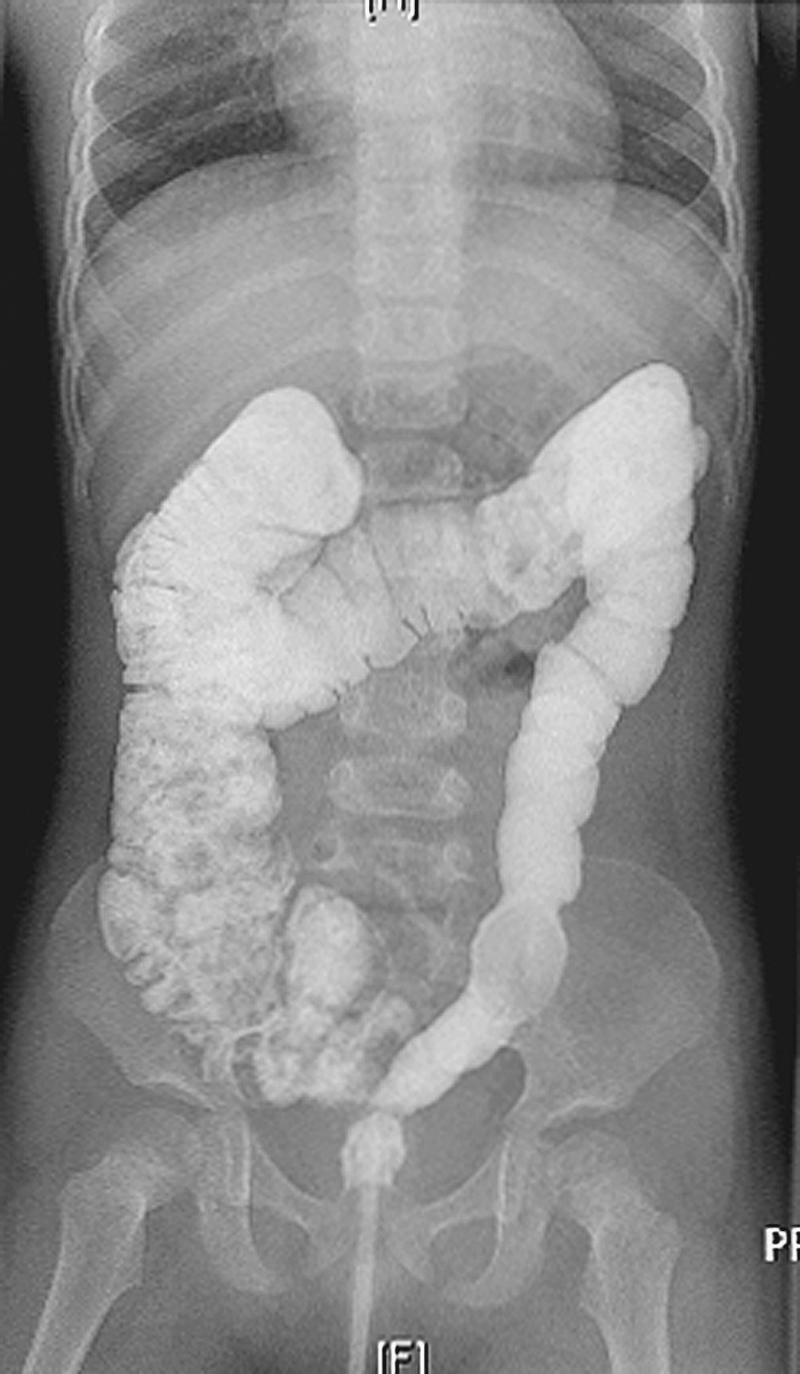
Patients with true fecal incontinence and a tendency toward constipation should not be treated with laxatives but instead need an enema program. In these children, the motility of the colon is slow. The basis of the bowel management program for them is to empty the child’s colon daily with an enema. No special diet or medications are necessary. The fact that they suffer from constipation (hypomotility) is useful because it helps them remain clean between enemas. The real challenge is to find the appropriate enema capable of evacuating the colon. Definitive evidence that the rectosigmoid colon is empty after an enema requires a plain abdominal radiograph (see Fig. 36.4 ). Soiling episodes or “accidents” occur when there is incomplete colonic evacuation that then leaks out over the next 24 hours before the next enema due to the patient’s underlying incontinence.
Become a Clinical Tree membership for Full access and enjoy Unlimited articles
If you are a member. Log in here